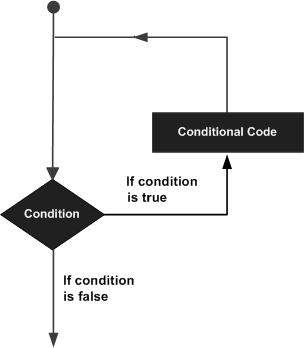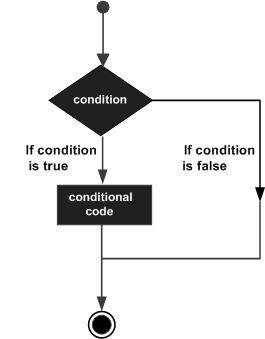Kotlin is a statically typed language, hence, functions play a great role in it. We are pretty familiar with function, as we are using function throughout our examples in our last chapters. A function is a block of code which is written to perform a particular task. Functions are supported by all the modern programming languages and they are also known as methods or subroutines.
At a broad level, a function takes some input which is called parameters, perform certain actions on these inputs and finally returns a value.
Kotlin Built-in Functions
Kotlin provides a number of built-in functions, we have used a number of buil-in functions in our examples. For example print() and println() are the most commonly used built-in function which we use to print an output to the screen.
Example
funmain(args: Array<String>){println("Hello, World!")}
User-Defined Functions
Kotlin allows us to create our own function using the keyword fun. A user defined function takes one or more parameters, perform an action and return the result of that action as a value.
Syntax
funfunctionName(){// body of function }
Once we defined a function, we can call it any number of times whenever it is needed. Following isa simple syntax to call a Kotlin function:
functionName()
Example
Following is an example to define and call a user-defined function which will print simple “Hello, World!”:
funmain(args: Array<String>){printHello()}funprintHello(){println("Hello, World!")}
When you run the above Kotlin program, it will generate the following output:
Hello, World!
Function Parameters
A user-defined function can take zero or more parameters. Parameters are options and can be used based on requirement. For example, our above defined function did not make use of any paramenter.
Example
Following is an example to write a user-defined function which will add two given numbers and print their sum:
funmain(args: Array<String>){val a =10val b =20printSum(a, b)}funprintSum(a:Int, b:Int){println(a + b)}
When you run the above Kotlin program, it will generate the following output:
30
Return Values
A kotlin function return a value based on requirement. Again it is very much optional to return a value.
To return a value, use the return keyword, and specify the return type after the function’s parantheses
Example
Following is an example to write a user-defined function which will add two given numbers and return the sum:
funmain(args: Array<String>){val a =10val b =20val result =sumTwo(a, b)println( result )}funsumTwo(a:Int, b:Int):Int{val x = a + b
return x
}
When you run the above Kotlin program, it will generate the following output:
30
Unit-returning Functions
If a function does not return a useful value, its return type is Unit. Unit is a type with only one value which is Unit.
funsumTwo(a:Int, b:Int):Unit{val x = a + b
println( x )}
The Unit return type declaration is also optional. The above code is equivalent to:
funsumTwo(a:Int, b:Int){val x = a + b
println( x )}
Kotlin Recursive Function
Recursion functions are useful in many scenerios like calculating factorial of a number or generating fibonacci series. Kotlin supports recursion which means a Kotlin function can call itself.
Syntax
funfunctionName(){...functionName()...}
Example
Following is a Kotlin program to calculate the factorial of number 10:
funmain(args: Array<String>){val a =4val result =factorial(a)println( result )}funfactorial(a:Int):Int{val result:Int
if( a <=1){
result = a
}else{
result = a*factorial(a-1)}return result
}
When you run the above Kotlin program, it will generate the following output:
24
Kotlin Tail Recursion
A recursive function is eligible for tail recursion if the function call to itself is the last operation it performs.
Example
Following is a Kotlin program to calculate the factorial of number 10 using tail recursion. Here we need to ensure that the multiplication is done before the recursive call, not after.
funmain(args: Array<String>){val a =4val result =factorial(a)println( result )}funfactorial(a: Int, accum: Int =1): Int {val result = a * accum
returnif(a <=1){
result
}else{factorial(a -1, result)}}</code></pre>
When you run the above Kotlin program, it will generate the following output:
24
Kotlin tail recursion is useful while calculating factorial or some other processing on large numbers. So to avoide java.lang.StackOverflowError, you must use tail recursion.
Higher-Order Functions
A higher-order function is a function that takes another function as parameter and/or returns a function.
Example
Following is a function which takes two integer parameters, a and b and additionally, it takes another function operation as a parameter:
funmain(args: Array<String>){val result =calculate(4,5,::sum)println( result )}funsum(a: Int, b: Int)= a + b
funcalculate(a: Int, b: Int, operation:(Int, Int)-> Int): Int {returnoperation(a, b)}
When you run the above Kotlin program, it will generate the following output:
9
Here we are calling the higher-order function passing in two integer values and the function argument ::sum. Here :: is the notation that references a function by name in Kotlin.
Example
Let's look one more example where a function returns another function. Here we defined a higher-order function that returns a function. Here (Int) -> Int represents the parameters and return type of the square function.
funmain(args: Array<String>){val func =operation()println(func(4))}funsquare(x: Int)= x * x
funoperation():(Int)-> Int {return::square
}
When you run the above Kotlin program, it will generate the following output:
9
Kotlin Lambda Function
Kotlin lambda is a function which has no name and defined with a curly braces {} which takes zero or more parameters and body of function.
The body of function is written after variable (if any) followed by -> operator.
Syntax
{variable with type -> body of the function}
Example
funmain(args: Array<String>){val upperCase ={ str: String -> str.toUpperCase()}println(upperCase("hello, world!"))}
When you run the above Kotlin program, it will generate the following output:
HELLO, WORLD!
Kotlin Inline Function
An inline function is declared with inline keyword. The use of inline function enhances the performance of higher order function. The inline function tells the compiler to copy parameters and functions to the call site.
Example
funmain(args: Array<String>){myFunction({println("Inline function parameter")})}inlinefunmyFunction(function:()-> Unit){println("I am inline function - A")function()println("I am inline function - B")}
When you run the above Kotlin program, it will generate the following output:
I am inline function - A
Inline function parameter
I am inline function - B



